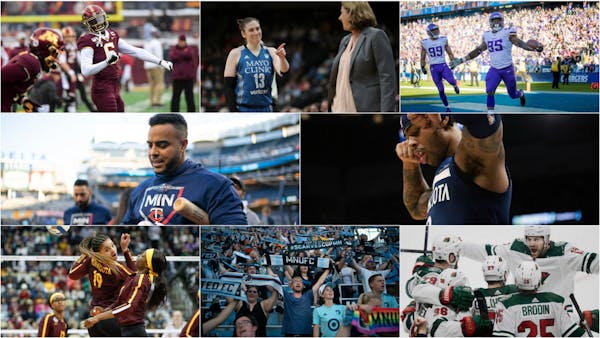Sensing an opportunity to command the sports spotlight by itself, Major League Baseball appears intent upon trying to be the first major U.S. pro league to return to action. The 30 MLB owners Monday approved a blueprint for playing roughly half of their normal 162-game season, beginning on or around the July 4th holiday weekend.
But plenty of hurdles remain before Target Field is occupied again, most notably getting the players to agree. Those negotiations began Tuesday, but safety and salaries, the two most difficult issues, remain unsettled.
The latest: MLB's 67-page "operations manual" to address player safety was delivered to the union Friday night; reportedly, proposals include no lineup card exchange, masks in the dugout for non-playing personnel and no leaving the team hotel on the road for any reason besides going to the game.
What's been said: MLB Commissioner Rob Manfred briefed Minnesota Gov. Tim Walz on the sport's plans Monday, but neither leader has publicly discussed that conversation. The Twins, too, are not commenting publicly about MLB's startup plans.
Where is everyone? It wouldn't take long for the Twins to regroup. Many players, including the half-dozen Venezuelans, remain in Florida. Kenta Maeda chose to join his family in Los Angeles rather than return to Japan. Trevor May, Mitch Garver and Max Kepler have waited out the delay in Minneapolis.
Biggest obstacles: Three large issues must be addressed: Frequent and universal testing must be arranged and approved by players to ensure their safety. Federal, state and local officials must give their blessing and lift prohibitions. And owners and players must decide how much players will be paid.
Any of those items could scuttle the entire plan. If widespread and regular testing is not available, it's likely that some players will be unwilling to play. California teams and the Toronto Blue Jays, among others, might not be able to play in their home parks. And some owners reportedly believe that playing games without fans in the stands, as is likely for at least part of the season, is economically untenable without reductions in player salaries, a position the players oppose.
Reasons for optimism: Baseball's determination to return to the field, and to be the first to do so, seems to have developed a momentum of its own. And while the disagreement over salaries seems like a potential deal-breaker, both sides will be under tremendous pressure to compromise and play ball.
The bottom line: Time grows short to put baseball's plan in action. In order to reopen training camps by mid-June, teams must get the go-ahead within the next two weeks. Nobody knows yet if the pandemic will allow the 2020 season to ever begin, but baseball's engines are clearly revving.







